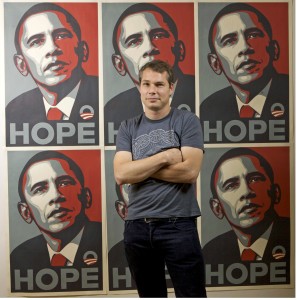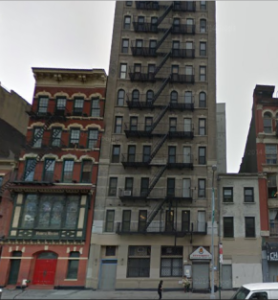New Yorkers, who have always prided themselves as cultural pioneers, should be concerned that new and upcoming artists have no affordable places to live and work anymore in the Big Apple.
Shepard Fairey, who now lives in Los Angeles, is a popular street artist who has a lot to say on this subject. Fairey is the creator of the ubiquitous Obama 2008 campaign poster “Hope,” among other major works. He was attending a Hennessy V.S luncheon at Soho House New York honoring his design for a label on a limited-edition bottle of their signature Cognac.
Fairey warned that New York stands to lose its place as America’s cultural mecca if it doesn’t act.
“New York was a hub for so long [because] high-low culture, high-low economics co-mingled very fluidly for years.”
“New York is incredibly successful, and one of the things that’s suffering is space for people to be struggling to make something that nobody’s seen before, or hear something nobody’s seen before, where they have no money and it’s not commercially viable yet, but it’s going to be the next thing. That’s happening in LA,” Fairey commented.
All the great neighborhoods that used to house struggling artists, such as Soho, the Bowery, Greenwich Village and Williamsburg, are now centers for high-rent condos and office buildings which used to house artists’ lofts and studios.
“You can’t be in New York and not have ¬either a trust fund or a good enough job to live,” he added. “Artists are screwed in New York right now.”
Fairey is working on a mural right now at 161 Bowery as part of the Little Italy Street Art Project.

